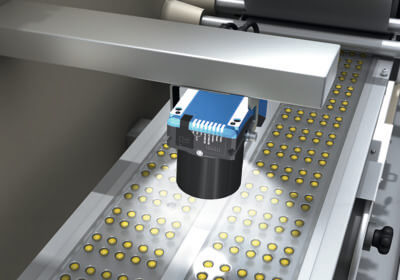Industrial fans for food processing and manufacturing machinery
The food processing industry is big business. With new processes, new packaging and more competition there’s added pressure on operations teams to implement the most efficient and cost effective method of manufacturing at every step in the production line.
Like many industries, the food processing industry involves a huge array of processes connected to the final end product. Taking a raw material to a finished product ready to be shipped to the warehouse is the most important aspect of the manufacturing process. This means that the highest standards of food hygiene must be adopted. The components within the manufacturing equipment are not to be overlooked. Without this significant machinery, the food processing industry would not be as efficient as it is now.
How are industrial fans used in food processing?
Industrial fans are used across a whole host of machinery in food processing. Stainless steel varieties such as the CMPI centrifugal medium pressure fan from Axair Fans, are favoured due to their hygienic and easy to clean material composition. Special coatings for perfect cleaning and inox steel may also be requested where required. Each application will have its own set of specifications in the design of the full manufacturing system.
Let’s take a look at some of the process that rely on the continuous duty of industrial fans to complete the food processing of many of the foods we consume today.
Material transportation:
Among many other materials, flour and starch are a flammable material. Therefore industrial fans used in this type of food processing need to be ATEX compliant. This ensures that the fan is able to handle the combustible material and reduce the risk of explosions. Many food materials are considered bulky and some industrial fans will be unable to cope. Material handling fans should be specified to ensure that the process is not disturbed and the equipment has the ability to work effectively without damage and decreases in yield.
Packaging:
Within many manufacturing units a pneumatic conveyor utilising a stream of clean air, is used to transport raw materials such as grains, sugar, flour and granular materials and they can be used to transport small packaged goods such as crisp packets. High pressure fans are often used to hold receptacles, such as bottles and containers, firmly to a conveyor belt during the filling process. In addition, storage areas require humidity and temperature control and at the end of the production line, a high pressure fan acting as a vacuum for the packaging, such as bottles or containers to be filled, may also be required. Fans may also be used to inflate packaging such as crisp bags before being filled later in the production line.
Airing & Drying:
Used to reduce the water volume within some food, in addition to facilitating the drying of washed fruits and vegetables industrial fans make a significant contribution. The dehydration of certain fruits, vegetables and meats is also often used to ensure widespread products and to prevent the growth of bacteria. Fans can be used to blow warm or cool air through the produce, in some cases at quite high pressure.
Cooking Fume Extraction:
Applied directly over ovens to extract cooking fumes within industrial food processing areas, this is one of the most common areas for the use of industrial fans in food processing. They can also be used to circulate air in large areas and dryers. Industrial fans are always present within commercial kitchens with legislation and guidelines dictating the correct installation and use of equipment. Compulsory air changes and noise levels will have a huge impact on many sites.
Cooling:
Industrial fans are used for cooling recently cooked food lines on conveyors and for food storage in industrial refrigeration plants. To optimise the process of cold storage the temperature and humidity level of each point within the room must be maintained to a uniform level and air distribution in large plant must also be uniform.
Whichever stage within food processing, whether industrial cooking prep, transportation, cooling, storage and refrigeration, all the way to the finished product, Industrial fans have an integral part of the production line. Low noise and vibrations are very important features to be considered when choosing the correct fan for the application. Given the duty performed by these industrial fans, manufacturers of these machines want to pass on savings to their customers. By installing a cost effective and efficient fan component into the equipment or by automatically matching the fan speed to the local requirements, based on, for example, temperature detectors or fume detector signals, it will reduce energy consumption and result in a cost effective solution for the end user. Ultimately savings in the cost of sales could be passed along to the end user of the manufactured food. Basically consumers find that their products are better value while produced to the optimum standard of manufacturing.








